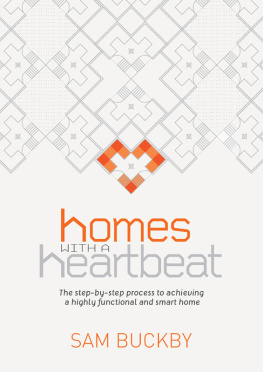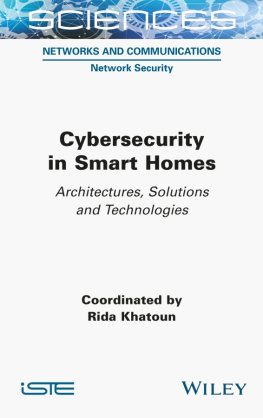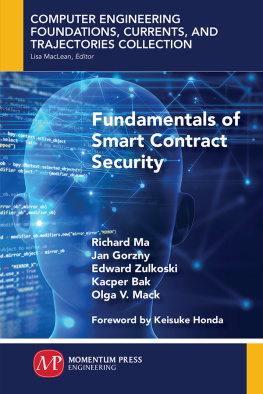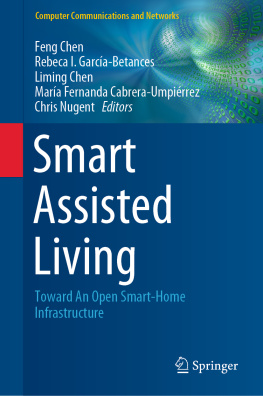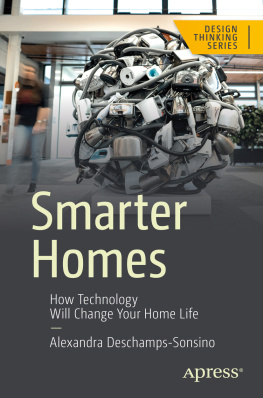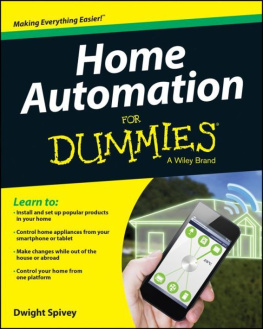Gordon Meyer - Smart Home Hacks: Tips & Tools for Automating Your House
Here you can read online Gordon Meyer - Smart Home Hacks: Tips & Tools for Automating Your House full text of the book (entire story) in english for free. Download pdf and epub, get meaning, cover and reviews about this ebook. year: 2004, publisher: OReilly Media, genre: Home and family. Description of the work, (preface) as well as reviews are available. Best literature library LitArk.com created for fans of good reading and offers a wide selection of genres:
Romance novel
Science fiction
Adventure
Detective
Science
History
Home and family
Prose
Art
Politics
Computer
Non-fiction
Religion
Business
Children
Humor
Choose a favorite category and find really read worthwhile books. Enjoy immersion in the world of imagination, feel the emotions of the characters or learn something new for yourself, make an fascinating discovery.

- Book:Smart Home Hacks: Tips & Tools for Automating Your House
- Author:
- Publisher:OReilly Media
- Genre:
- Year:2004
- Rating:5 / 5
- Favourites:Add to favourites
- Your mark:
Smart Home Hacks: Tips & Tools for Automating Your House: summary, description and annotation
We offer to read an annotation, description, summary or preface (depends on what the author of the book "Smart Home Hacks: Tips & Tools for Automating Your House" wrote himself). If you haven't found the necessary information about the book — write in the comments, we will try to find it.
So much of what is commonplace today was once considered impossible, or at least wishful thinking. Laser beams in the operating room, cars with built-in guidance systems, cell phones with email access. Theres just no getting around the fact that technology always has, and always will be, very cool.
But technology isnt only cool; its also very smart. Thats why one of the hottest technological trends nowadays is the creation of smart homes.
At an increasing rate, people are turning their homes into state-of-the-art machines, complete with more switches, sensors, and actuators than you can shake a stick at. Whether you want to equip your home with motion detectors for added security, install computer-controlled lights for optimum convenience, or even mount an in-home web cam or two purely for entertainment, the world is now your oyster. Ah, but like anything highly technical, creating a smart home is typically easier said than done.
Thankfully, Smart Home Hacks takes the guesswork out of the process. Through a seemingly unending array of valuable tips, tools, and techniques, Smart Home Hacks explains in clear detail how to use Mac, Windows, or Linux to achieve the automated home of your dreams. In no time, youll learn how to turn a loose collection of sensors and switches into a well-automated and well-functioning home no matter what your technical level may be.
Smart Home Hacks covers a litany of stand-alone and integrated smart home solutions designed to enhance safety, comfort, and convenience in new and existing homes. Kitchens, bedrooms, home offices, living rooms, and even bathrooms are all candidates for smart automation and therefore are all addressed in Smart Home Hacks .
Intelligently written by engineering guru and George Jetson wannabe, Gordon Meyer, Smart Home Hacks leaves no stone unturned. From what to purchase to how to use your remote control, its the ultimate guide to understanding and implementing complete or partial home automation.
Gordon Meyer: author's other books
Who wrote Smart Home Hacks: Tips & Tools for Automating Your House? Find out the surname, the name of the author of the book and a list of all author's works by series.

